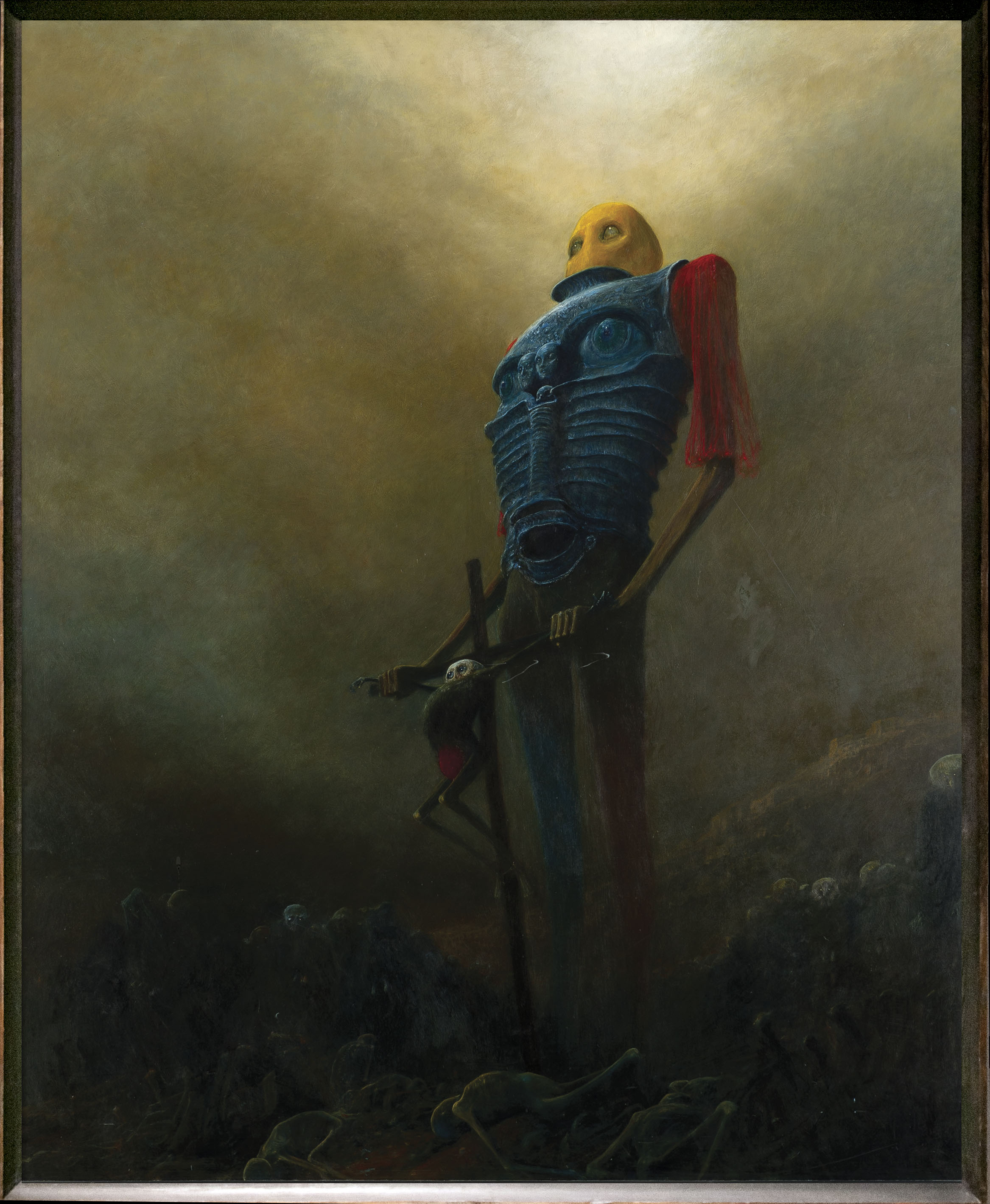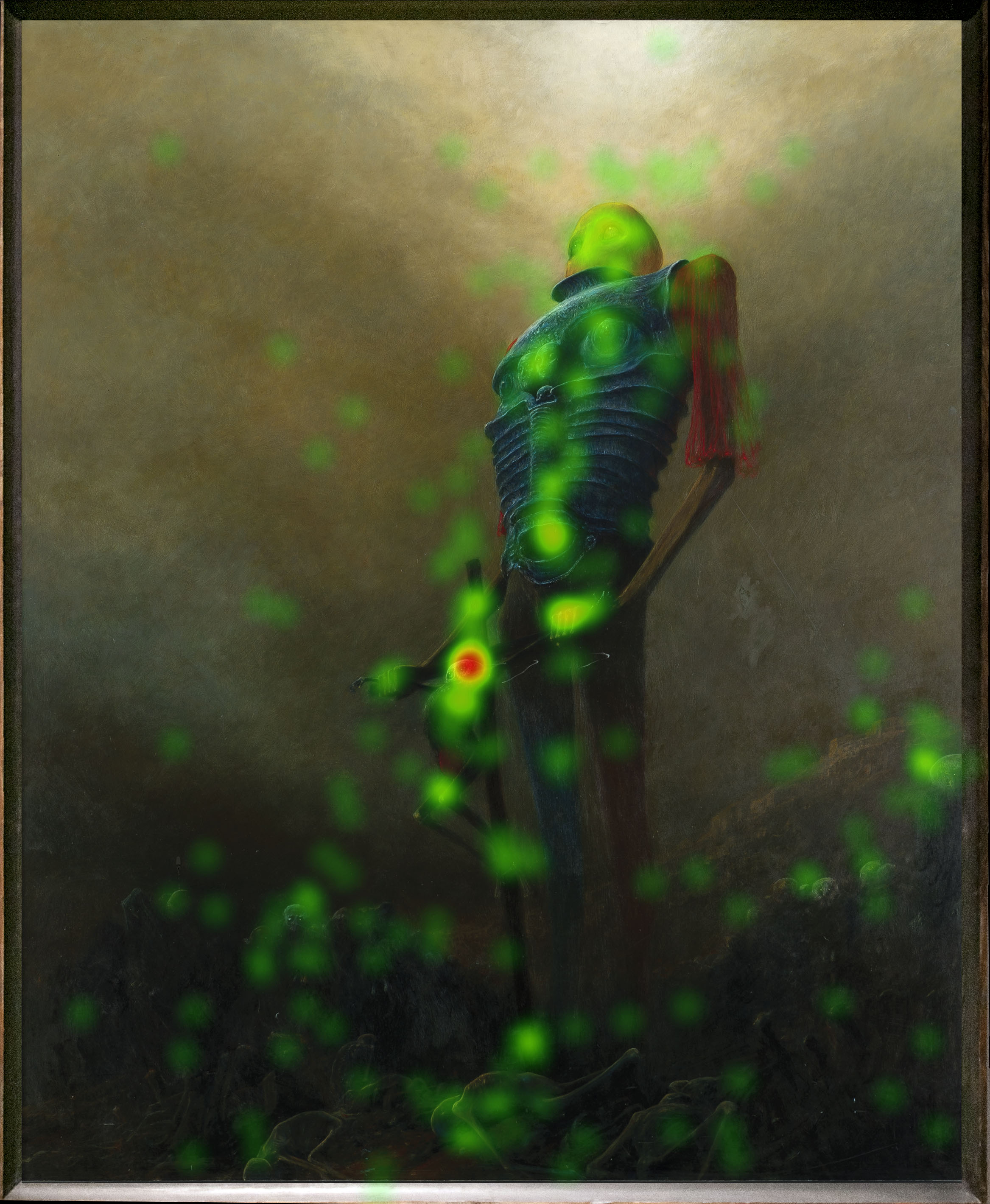
1973, oil on chipboard, 122 cm x 98 cm,
average looking time: 17,57 sec.
Even though I walk through the valley of the shadow of death, I will fear no evil, for you are with me.
(artist’s life motto – Psalm 23, the Bible)
Zdzisław Beksiński was born in 1929 in Sanok, died tragically in 2005 in Warsaw. In his artistic career, he dealt with photography, painting and computer graphics. He graduated from Kraków University of Technology, where he did engineering studies of architecture. His paintings amaze with their meticulous details and perfect workshop. The subject matter of his works remained practically the same since the 70s and can be described as dream painting or dream fantasy art. At the same time, it must be noted that the artist distanced himself from such interpretations – he openly stated that he “didn’t program a painting from the onirical poetics point of view”. On the other hand, he claimed: “for me, a painting is something incredibly distant from any physical reality. What I express is imagined reality”. While developing his iconic style, he was often accused of the lack of originality. Today he is one of the best-selling Polish painters. Some details of his private life have been depicted in J. P. Matuszyński’s film “The last family” (“Ostatnia rodzina”).

Beksiński’s art is quite challenging to interpret, largely because of a rather hermetic universe of characters and worlds he created. The picture from the so-called fantastic period shows two figures with faces of unreal, almost magical appearance, constituting the main, repetitive element. At their feet – the compositional axis of the painting – there are bones, skulls and dead bodies, all terrifying in their verismo. We can only guess the meaning of the creatures presented. The lack of any title also does not make our interpretation easier, which was perfectly intentional. Beksiński wanted to leave his recipient with absolute freedom of interpretation.


In order to interpret the two characters’ faces, we must refer to the fantastic and metaphorical nature of Beksiński’s works. That’s how he used to describe them: “I see my faces – I guess I can call them »mine« as they constitute my favourite art theme – rather as some pretext because it’s more about »variations on a theme«”. We can therefore try to answer what kind of theme those variations are about.
The scene might be associated with crucifiction or passion. Perhaps it’s some apocalyptic vision of the final judgment – the artist often used to stress the importance of religion as his source of inspiration.
Each of us looks at the picture in a different way!
Site map
- How to use the guide
- Andrzej Wróblewski “Shooting I, Execution”
- Stanisław Borysowski “K. B. Graphic”
- Tadeusz Dominik “Composition”
- Zbigniew Makowski “Still Life”
- Anna A. Güntner “High School Graduates”
- Zdzisław Beksiński “Untitled”
- Tadeusz Kantor “Multipart – An Umbrella”
- Tadeusz Brzozowski “Favours”
- Jonasz Stern “The Moment of Light”
- Łukasz Korolkiewicz “Dwellers of Sodom”
- Interviews
PROJECT REALISED AS PART OF THE KUYAVIAN-POMERANIAN VOIVODSHIP MARSHALL SCHOLARSHIP
content & graphic design: Łukasz Kędziora | art collection photographs: Krzysztof Deczyński | translation and proofreading by Martyna Kowalska



